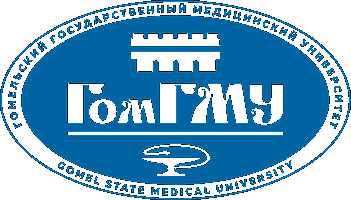| dc.contributor.author | Порошина, Л. А. | |
| dc.contributor.author | Юрковский, А. М. | |
| dc.date.accessioned | 2022-12-14T06:33:35Z | |
| dc.date.available | 2022-12-14T06:33:35Z | |
| dc.date.issued | 2022 | |
| dc.identifier.citation | Порошина, Л. А. Сонографический метод диагностики ограниченной склеродермии / Л. А. Порошина, А. М. Юрковский // Медицинские новости. – 2022. – № 10 (337). – С. 38–42. | ru_RU |
| dc.identifier.uri | http://elib.gsmu.by/handle/GomSMU/13561 | |
| dc.description.abstract | В качестве одного из эффективных и неинвазивных методов диагностики ограниченной склеродермии рассматривается сонография. Имеющиеся в настоящее время описания сонографической картины при ограниченной склеродермии могут представляться немногочисленными и противоречивыми. Сонографический метод диагностики ограниченной склеродермии является достаточно чувствительным и позволяет более четко определить стадию патологического процесса, выраженность воспаления, склероза и/или атрофии. При сонографическом исследовании в стадии эритемы выявлено утолщение и повышение эхогенности дермы, «размытость» границы комплекса дерма/гиподерма, мелкие очаги пониженной эхогенности (как в дерме, так и на границе с гиподермой), а также отек гиподермы. В стадии склерозирования определялось увеличение толщины или истончение комплекса дерма/гиподерма при повышении их эхогенности. Истончение комплекса дерма/гиподерма при понижении эхогенности гиподермы соответствует стадии атрофии. Стандартизированная полуколичественная оценка выраженности активности и атрофических изменений может быть использована для решения вопроса тактики ведения пациента, оценки результаты терапии, мониторинга течения заболевания. | ru_RU |
| dc.description.abstract | Sonography is considered as one of the effective and noninvasive diagnostic methods for morphea. Currently available descriptions of the sonographic picture in limited scleroderma are few and contradictory. The sonographic method of morphea diagnosis is quite sensitive and allows to determine more clearly the stage of the pathological process, the severity of inflammation, sclerosis and/or atrophy. Sonographic examination at the stage of erythema reveals thickening and increase of derma echogenicity, «blurring» of derma/hypoderma complex border, small foci of reduced echogenicity (both in derma and at the border with hypoderma) and hypoderma edema. At the sclerosing stage, an increase in thickness or thinning of the derma/hypoderma complex with an increase in their echogenicity was detected. Thinning of derma/ hypoderma complex with decreased echogenicity of hypoderma corresponds to the atrophy stage. Standardized semi - quantitative assessment of the severity of activity and atrophic changes can be used to decide on the tactics of patient management, assess the results of therapy, and monitor the course of the disease. | |
| dc.language.iso | ru | ru_RU |
| dc.publisher | Медицинские новости | ru_RU |
| dc.subject | сонография кожи | ru_RU |
| dc.subject | патоморфология кожи | ru_RU |
| dc.subject | сонографические паттерны | ru_RU |
| dc.subject | ограниченная склеродермия | ru_RU |
| dc.subject | skin sonography | ru_RU |
| dc.subject | skin pathomorphology | ru_RU |
| dc.subject | sonographic patterns | ru_RU |
| dc.subject | limited scleroderma | ru_RU |
| dc.title | Сонографический метод диагностики ограниченной склеродермии | ru_RU |
| dc.type | Article | ru_RU |
